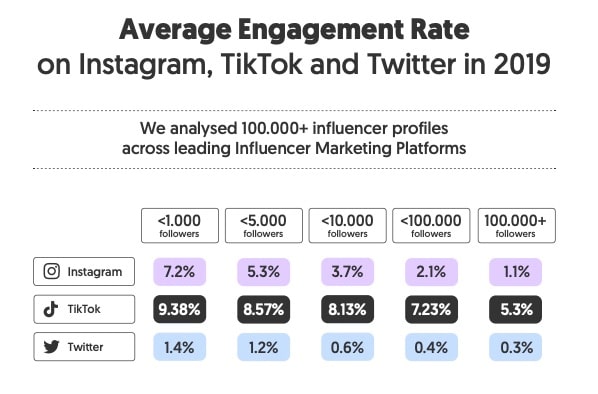The Rise of Subscription-Based Models: How Micro-Influencers Are Shaping E-commerce
Meta Description: Explore how subscription-based models are transforming e-commerce and the pivotal role that micro-influencers play in driving consumer engagement and retention.
In today's rapidly evolving e-commerce landscape, businesses are constantly on the lookout for innovative ways to engage customers and drive sales. One of the most notable trends emerging is the rise of subscription-based models, which have not only revolutionized how consumers shop but also how brands communicate with them.
Amidst this transformation, micro-influencers have surfaced as key players who have the potential to shape buyer decisions, making their role in subscription marketing essential. In this blog, we will delve into the intricate relationship between subscription models and micro-influencing, discussing market trends, practical strategies, and the dynamics at play for businesses seeking growth in these competitive times.
About the Author: Elena Novak is a digital marketing specialist with over 5 years of experience in SEO and e-commerce strategies, helping numerous brands optimize their marketing efforts for better engagement and conversion rates.
Understanding the Subscription Model Trend
The Shift Towards Subscriptions
Consumers today prefer convenience, affordability, and personalized experiences. As a result, the subscription economy has witnessed exponential growth. According to a 2022 McKinsey report, subscription services have seen a 100% increase in the number of subscribers over recent years. Currently, the global e-commerce sales have surpassed $4.2 trillion, with subscription services significantly contributing to this revenue stream.
Why Subscription Models?
There are several reasons behind the growing popularity of subscription models:
- Predictable Revenue: Subscription models provide businesses with predictable cash flow.
- Customer Loyalty: These models enhance customer retention and loyalty through consistent engagement.
- Tailored Experiences: They allow consumers to receive personalized products and services.
Understanding these advantages is fundamental for brands aiming to adapt and thrive in the digital marketplace.
Exploring the Micro-Influencer Phenomenon
The Power of Micro-Influencers
Micro-influencers, defined as individuals with 1,000 to 100,000 followers, have emerged as vital contributors to the marketing equation. The Influencer Marketing Hub reports that micro-influencers boast an engagement rate of around 7%, significantly higher than the 1-3% typical of larger influencers.
This higher engagement is driven by:
- Authenticity: Micro-influencers are often seen as more relatable and trustworthy.
- Niche Audiences: They frequently operate within specific niches, allowing brands to target precise demographics.

Case in Point: Successful Collaborations
Two brands have notably leveraged micro-influencers effectively:
Birchbox: This subscription box service targeted micro-influencers on social media, leading to a surge in subscriptions and creating a community around beauty products.

Gymshark: By utilizing micro-influencers in fitness circles, Gymshark fostered a sense of community and achieved over £200 million in revenue through personalized influencer marketing.

These examples underscore the substantial impact that micro-influencers can achieve when effectively integrated into a brand's marketing strategy.
Actionable Strategies for Brands
Identifying the Right Micro-Influencers
When seeking to incorporate micro-influencers into subscription marketing initiatives, brands should consider the following best practices:
- Alignment with Brand Values: Ensure the micro-influencer’s persona and values resonate with your brand.
- Encouraging Creative Freedom: Allow influencers to create genuine content that reflects their unique style and voice.
- Utilizing User-Generated Content (UGC): UGC tends to resonate deeply with audiences, driving authenticity and trust.
Measuring Success: Key Metrics to Track
Brands should keep a close eye on essential campaign metrics, including:
- Customer Acquisition Cost (CAC): Understand the cost associated with acquiring new subscribers through each micro-influencer.
- Lifetime Value (LTV): Calculate the total revenue generated from a customer over their relationship with the subscription service.
Utilizing these metrics helps businesses refine their strategies for maximizing their subscription model success.
SEO Implications and Content Trends
Capitalizing on SEO
In addition to powerful marketing tactics, understanding SEO trends is crucial for enhancing visibility. Research from SEMrush indicates that keywords around "micro-influencer marketing" and "subscription-based models" are rapidly gaining traction. To capitalize:
- Create Diverse Content Types: Brands should offer varying formats like video testimonials, blogs, and curated lists that engage both the influencers' followers and potential subscribers.
- Utilize Keywords Intelligently: Focus on incorporating trending keywords into content to improve search rankings.
The Role of Personalization and Sustainability
Contemporary consumers, particularly Gen Z and millennials, are gravitating towards brands that prioritize personalization and sustainability. Brands should consider:
- Personalized Subscription Boxes: Work with micro-influencers to tailor subscription offerings to meet specific customer preferences.
- Sustainable Practices: Highlight environmentally conscious initiatives and partner with micro-influencers who advocate for sustainability, appealing to conscientious consumers.
The Future of E-commerce: Embracing Subscription Models with Influencer Marketing
The intersection of subscription models and micro-influencing offers incredible opportunities for brands willing to adapt and innovate. As consumer behavior continues to evolve, the importance of building relationships with micro-influencers grows.
Emerging Trends
Keep an eye on key trends such as:
- Increased Focus on Relatable Voices: Authenticity will remain a driving force behind purchasing behaviors.
- Integration of Technology: Brands will leverage AI and data analytics to enhance personalization in their subscription offerings.
Conclusion
The rise of subscription-based models presents both challenges and rewards for e-commerce businesses. By effectively integrating micro-influencers into their strategies, brands can tap into authentic engagement and consumer trust, driving subscription growth and enhancing customer loyalty.
Unlock the potential of micro-influencer marketing and adapt your approach to subscription models. Consider implementing the strategies discussed to elevate your brand and keep pace with emerging trends in e-commerce. Feel free to explore our related content to delve deeper into digital marketing strategies, or subscribe to our newsletter for ongoing insights and updates!
